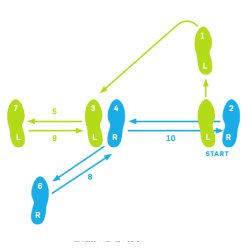
My old boss was thrilled the first time he saw the image of a spinning globe online. But that was long ago, when Web users were explorers, the Internet was a place of discovery, and an animated .gif could muster boyish enthusiasm. Expectations are much higher and far more sophisticated now that users have visited hundreds of sites that demonstrate the core truth of the cliché that notes the Web is about constant change, with users like kids in a candy store pointing out cool features they’d like to see.
We can now explore some of those user expectations in the results of a Reader Profile Study conducted last April by Harvey Research Inc. for Communications of the ACM. The study shows that Web readers have an eye on the future and a foot in the past. Indeed, that sentiment is embodied in one reader’s suggestion that ACM reintroduce self-assessment procedures and put them online. These questionnaires, designed to help a person appraise and develop his or her knowledge of a particular topic, were first launched over 30 years ago.
Other findings from the study show a split affinity for the old and the new. Half of the survey’s respondents say they will use Communications’ Web site to request RSS feeds or email alerts, fast and easy ways to get new articles. A greater number, 77.1%, will use it to access the magazine’s archive of 50-plus years of articles. (For more information about this readership survey, see Scott Delman’s "Publisher’s Corner" on page 7.)
Recent site usage analysis reinforces the pushme-pullyu preferences of our users. Alerts and feeds get more clicks than any other item on the ACM Resources page. Those electronic formats are balanced by old-fashioned printouts. The "Print" button is consistently the most popular click in the Tools for Readers, and that’s true for both 4,000-word Contributed Articles and 350-word blog entries as well. These contrasting tendencies would be reconciled if users were printing their e-material. But who would do that?



Join the Discussion (0)
Become a Member or Sign In to Post a Comment